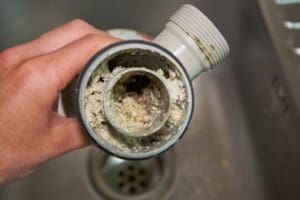Simple Procedures to Enhance Low Water Pressure in Your Home
Simple Procedures to Enhance Low Water Pressure in Your Home
Blog Article
They are making a few good points about Low Water Pressure in the House? in general in this content directly below.

Low tide stress in your house can be an aggravating trouble, influencing every little thing from bathing to cleaning meals. If you're experiencing weak water flow, there are numerous possible reasons and solutions to explore. In this overview, we'll go over common reasons for low water stress and sensible steps to address the issue effectively.
Intro to Low Water Pressure
Low tide stress occurs when the circulation of water from your taps, showers, and other components is weaker than common. This can make everyday tasks more difficult and less reliable. Understanding the root causes of low water stress is critical to finding the right option.
Usual Sources Of Low Water Stress
Pipeline Obstructions
In time, pipelines can come to be blocked with natural resource, debris, or particles, limiting the flow of water. This is a typical problem in older homes with galvanized steel pipelines.
Corrosion
Corrosion within pipes can bring about leakages and minimized water pressure. Rust build-up can restrict water circulation, especially in maturing plumbing systems.
Faulty Stress Regulatory Authorities
Stress regulatory authorities are accountable for preserving regular water stress in your house. If they malfunction, it can result in low tide stress or irregular flow throughout your home.
Local Water System Issues
Often, the problem lies outside your home. Community water supply problems, such as main line leaks or maintenance work, can temporarily reduce water pressure in your area.
Exactly How to Identify Low Tide Stress
Inspecting Taps and Fixtures
Begin by evaluating the water pressure at different taps and fixtures throughout your home. If the concern is separated to particular areas, it might suggest localized problems.
Inspecting Pipelines
Inspect visible pipes for indicators of leaks, rust, or clogs. Pay attention to any unusual noises, such as banging or rattling pipelines, which might indicate concerns within the plumbing system.
Consulting with a Plumber
If you're incapable to determine the source of low tide pressure, consider hiring a professional plumber to carry out a detailed evaluation. They can identify underlying problems and recommend ideal remedies.
DIY Solutions to Deal With Low Water Pressure
Cleansing Aerators and Showerheads
Mineral deposits can accumulate in aerators and showerheads, reducing water circulation. Get rid of and clean up these parts frequently to improve water pressure.
Flushing Hot Water Heater
Sediment buildup in the hot water heater can restrict flow and minimize efficiency. Flushing the storage tank occasionally helps get rid of sediment and maintain optimal efficiency.
Examining Pressure Regulatory Authority
Make sure that the stress regulatory authority is functioning correctly. Changing or changing the regulatory authority can help restore proper water pressure throughout your home.
Cleaning Clogs in Pipes
For minor obstructions, attempt making use of a plumbing serpent or chemical drainpipe cleaner to clear blockages in pipes. Be cautious when making use of chemicals and comply with safety guidelines.
When to Call a Professional Plumber
If do it yourself efforts stop working to settle the concern or if you believe significant plumbing troubles, it's ideal to seek help from a qualified plumber. They have the know-how and devices to deal with complicated problems safely and efficiently.
Safety Nets to Maintain Water Stress
Normal Maintenance
Set up regular maintenance for your plumbing system to prevent concerns such as corrosion, leaks, and blockages. Resolving minor troubles early can assist avoid more substantial repair work in the future.
Installing a Stress Booster
Take into consideration setting up a pressure booster pump to boost water pressure in locations with constantly reduced circulation. This can be especially beneficial for multi-story homes or homes with high-demand fixtures.
Monitoring Water Usage
Be mindful of water usage practices and stay clear of ill-using the plumbing system. Easy changes, such as astonishing showers and washing loads, can assist preserve ample water stress.
Verdict
Taking care of low tide stress can be irritating, yet identifying the underlying reasons and applying suitable remedies can bring back optimum circulation throughout your home. Whether it's cleansing aerators, examining pipes, or seeking advice from a plumber, taking positive steps can guarantee a constant supply of water for your daily requirements.
FOUR WAYS TO FIX LOW WATER PRESSURE NOW
Turning on a shower or faucet only to find the water comes out in a sad, slow drizzle is never a good feeling. How exactly are you supposed to wash a pan or take a quick shower when it takes 10 minutes just to rinse off a little soap? The good news is that when your water pressure is bad, there's always a cause: typically one that can be easily fixed. Here are some of the most common causes of low pressure and what you can do to fix the issue:
DEBRIS AND MINERAL DEPOSIT BUILDUPS
If you notice low water pressure from just one or two of the fixtures in your house, the problem likely has to do with debris buildup. Water is full of minerals and other debris, all of which can accumulate in your pipes and on your fixtures. This can cause a blockage that affects how much water flows through. To fix this, try filling a small plastic bag with white vinegar, and use a rubber band to hang it around your showerhead or faucet. Let the head of the fixture soak for a few hours, and the vinegar should loosen the deposits.
WATER LEAKS
Leaks are another common cause of low water pressure. If water is flowing out of your plumbing through a hole or crack before it can reach your fixture, the pressure coming out of the faucet or showerhead will be lower. A plumbing professional is your best bet for finding and repairing a leak in your water supply pipes.
Leaks are another common cause of low water pressure. If water is flowing out of your plumbing through a hole or crack before it can reach your fixture, the pressure coming out of the faucet or showerhead will be lower. A plumbing professional is your best bet for finding and repairing a leak in your water supply pipes.
FOUR WAYS TO FIX LOW WATER PRESSURE NOW
Turning on a shower or faucet only to find the water comes out in a sad, slow drizzle is never a good feeling. How exactly are you supposed to wash a pan or take a quick shower when it takes 10 minutes just to rinse off a little soap? The good news is that when your water pressure is bad, there's always a cause: typically one that can be easily fixed. Here are some of the most common causes of low pressure and what you can do to fix the issue:
DEBRIS AND MINERAL DEPOSIT BUILDUPS
If you notice low water pressure from just one or two of the fixtures in your house, the problem likely has to do with debris buildup. Water is full of minerals and other debris, all of which can accumulate in your pipes and on your fixtures. This can cause a blockage that affects how much water flows through. To fix this, try filling a small plastic bag with white vinegar, and use a rubber band to hang it around your showerhead or faucet. Let the head of the fixture soak for a few hours, and the vinegar should loosen the deposits.
WATER LEAKS
Leaks are another common cause of low water pressure. If water is flowing out of your plumbing through a hole or crack before it can reach your fixture, the pressure coming out of the faucet or showerhead will be lower. A plumbing professional is your best bet for finding and repairing a leak in your water supply pipes.
Leaks are another common cause of low water pressure. If water is flowing out of your plumbing through a hole or crack before it can reach your fixture, the pressure coming out of the faucet or showerhead will be lower. A plumbing professional is your best bet for finding and repairing a leak in your water supply pipes.
A VALVE ISSUE
If you have low water pressure throughout your home, check your main shut-off valve to make sure it's completely open. You may also want to see if there's a pressure-reducing valve installed. If there is, have a plumber help you adjust the settings to get the pressure you're looking for.
OTHERS USING WATER
Believe it or not, your low water pressure could be caused by your neighbors. If you notice low pressure at certain times of day, it may be because you and the people living next to you have similar schedules - when everyone is showering at the same time, the pressure will be lower in every home. Low pressure throughout the neighborhood may also be caused by an issue with your municipal water supply. If that's the case, call the supplier to see if they're working on the issue.
https://www.rotorooter.com/blog/water-leaking/low-water-pressure-fixes/

We were made aware of that editorial on from an acquaintance on a different web page. Please pause to distribute this entry if you liked it. Thank you for your time spent reading it.
Book Report this page